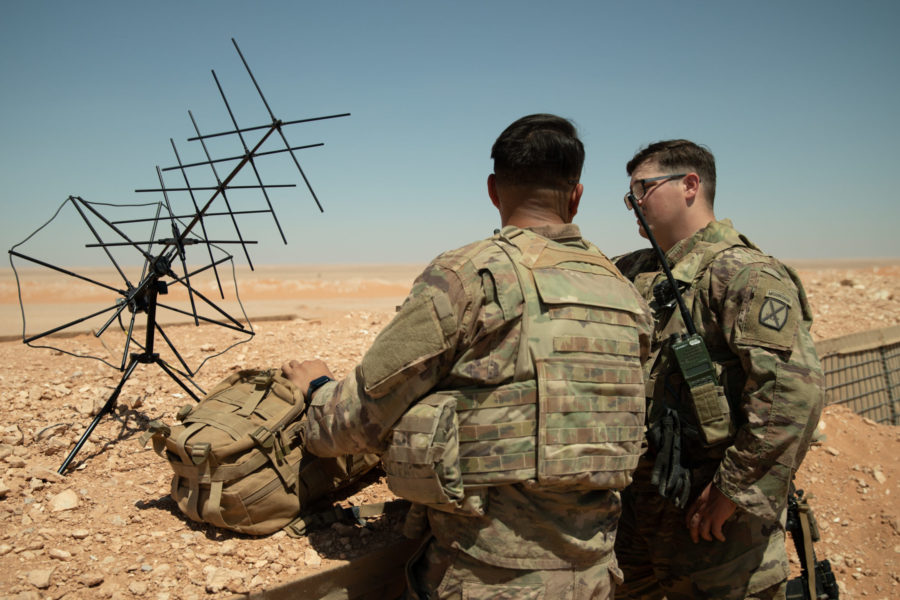Three drones attacked a U.S. base in southeastern Syria on Jan. 20, the latest in a series of threats to the strategically positioned outpost, U.S. Central Command said.
Two of the drones were shot down by the ground-based Coyote air defense system, according to a U.S. official, who said American forces had no prior warning of the attack.
But the remaining drone struck home at Al Tanf Garrison, wounding two members of the Syrian Free Army, a partner force the U.S. military has trained as part of its campaign against ISIS militants.
CENTCOM said no U.S. personnel were harmed, but American troops were present at the time of the attack.
The military’s Coyote is a new counter-drone system developed by Raytheon Technologies. Originally a tube-launched unmanned aerial vehicle that could be deployed from the ground, air, or a ship, the Army selected it in 2018 for “near-term” counter-UAS. The air defense version of the system uses a Coyote equipped with a seeker and warhead to intercept drones. In 2022, Raytheon and the Army said the Coyotes successfully destroyed mock enemy drones during 2021 testing at the Army’s Yuma Proving Ground.
Facing increased threat from Iranian-made drones in the hands of rebel groups, CENTCOM has been seeking enhanced counter-UAS weapons for some time. U.S. forces have countered drones in the region with air-to-air missiles, Counter-Rocket, Artillery, Mortar (C-RAM) rapid-fire anti-air guns. The Coyote augments air defenses with a small, moveable anti-drone capability that behaves like a short-range surface-to-air missile system.
The Al Tanf outpost is located near Syria’s border with Iraq and Jordan, and has been in place since 2016 when it was established to help combat ISIS. The base drew objections from Iran, which backs rival militias in Syria and supplies them through Iraqi territory.
On June 8, 2017, an Iranian Shahed-129 drone flew into southeastern Syria and dropped a bomb near the U.S. partner force, which is also known as the Maghaweir al-Thowra. The drone was shot out of the sky by an F-15 using an AMRAAM missile. Later that month, an F-15 shot down another Iranian drone that was flying toward southeastern Syria.
More recently Al Tanf was struck on Aug. 15, 2022, by an Iranian-backed militia in central Iraq. The Biden administration retaliated later that month.
CENTCOM said the Jan. 20 attack used “three one-way attack drones.” The U.S. official said it was too early to attribute blame for the strike or say how the U.S. might respond.
Countering drones has been a persistent problem for CENTCOM and the command has worked to build a better, more integrated air defense system, and the Coyote system adds another element to that network. Air Forces Central has also conducted combat air patrols in the area as part of the broader effect to protect U.S. forces.
On Jan. 18, U.S. and Syrian Democratic Forces conducted an operation in Eastern Syria to capture an ISIS provincial leader, CENTCOM said on Jan. 19. Around 900 U.S. troops are based in southern and eastern Syria and another 2,500 U.S. troops are in Iraq.
“Attacks of this kind are unacceptable–they place our troops and our partners at risk and jeopardize the fight against ISIS,” CENTCOM spokesperson Col. Joe Buccino said in a statement on the latest attack.
